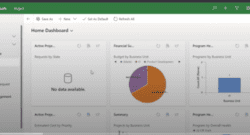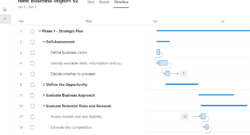Project for the Web Scheduling
Protecting Contract Deliverables With Schedule Risk Analysis and Schedule Margin
Event Description: Learn why the finish date predicted by Microsoft Project is NOT the date you promise to deliver to your customer. Even with excellent estimating and execution, the projec...
Project Management with Project for the web – Project Accelerator Application and how to use it as an extension for Project for the web (3 of 3)
Event Description: This three-part course begins by providing an overview of Project for the web, and differences between classic Project desktop and P4W. We will cover everything from the basics...
Project Management with Project for the web – Resources, Groups, Attachments, Collaboration and Using Teams with Project for the web (2 of 3).
Event Description: This three-part course begins by providing an overview of Project for the web, and differences between classic Project desktop and P4W. We will cover everything from the basics...
Project Management with Project for the web – From creation through scheduling (1 of 3).
Event Description: This three-part course begins by providing an overview of Project for the web, and differences between classic Project desktop and P4W. We will cover everything from the basics...
5 Tips for Project Managers using Project for the web.
Many would say that MS Project is dead, or at least dying. Microsoft’s Project for the web (P4W) is being used more and more in everyday project management. The software still has a lot of things miss...
MPUG’s Event Schedule
We’re pretty excited about this event lineup,so we saved a seat just for you. UPCOMING LIVE WEBINARS WBS Schedule Pro presentation with Critical Tools September 14 @ 12:00 pm – 1:00 pm ET ...
A Better Microsoft Project: Baselining
This article is the fifth in my series, “A Better Microsoft Project,” You can find the earlier articles here: Introduction, Time Modeling, D * U – W fields, and Workload Leveling. I find baselining to...
A Better Microsoft Project: Workload Levelling and Resource-Critical Path
Most projects are logic-constrained projects (or, if I might suggest, wrongfully treated as such). A logic-constrained project has a duration only determined by logic (i.e., the network of depend...
A Better Microsoft Project: Background Color in D * U = W fields to Communicate Which Fields are Protected and Editable
This article is the third in this series, A Better Microsoft Project. You can find the first two articles here and here. I believe the fields involved in assigning resources in MS Project have created...







